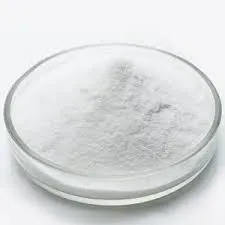
Oct . 11, 2024 09:27 Back to list
construction hpmc
The Role of Construction HPMC in Modern Building Practices
In the ever-evolving field of construction, the integration of advanced materials has been pivotal in enhancing the efficiency, durability, and sustainability of building projects. One such essential material making waves in the industry is Hydroxypropyl Methylcellulose (HPMC). This cellulose ether, derived from natural wood and plant fibers, has become a cornerstone ingredient in diverse applications, particularly in tiling adhesives, cementitious products, and plaster formulations.
What is HPMC?
HPMC is a white, odorless powder that, when mixed with water, forms a thick, viscous solution. It is renowned for its excellent water-retention properties, fat-suspending capabilities, and ability to improve the flow characteristics of building materials. Its versatility is a significant factor in its widespread use across various construction applications.
Enhancing Adhesion in Tiling
One of the most notable uses of HPMC in construction is in tile adhesives. The construction industry relies heavily on HPMC to enhance the performance of tile and stone adhesives. The addition of HPMC significantly improves the adhesive's ability to retain water, ensuring that the cement remains workable for a longer period. This property is crucial in preventing premature setting, allowing contractors to work more efficiently without the need for constant mixing on-site. The enhanced adhesion also provides a stronger bond between the tiles and substrates, minimizing the risk of failure in tiling installations.
Improving Workability and Performance
In cementitious materials, the inclusion of HPMC contributes to superior workability. The thixotropic nature of HPMC allows for better control over the viscosity of the mixtures, enabling easy application in varied settings. When used in mortar and plaster applications, HPMC aids in achieving smoother finishes and improved leveling properties. This enhanced workability is crucial for craftsmen who demand precision and quality in their work.
construction hpmc

Moreover, HPMC's water-retention capabilities ensure that the mixture does not dry out too quickly. This aspect is particularly important in hot and arid climates where rapid evaporation can lead to cracks and other structural issues. By maintaining optimal moisture levels, HPMC enhances the durability and longevity of the finished product, ultimately leading to more resilient structures.
Contributing to Sustainable Practices
Sustainability is a pressing concern in the construction industry. HPMC plays a role in promoting eco-friendly building practices. By improving the efficiency of building materials, such as reducing the amount of cement required in mixtures due to enhanced bonding capabilities, HPMC helps lower the carbon footprint of construction projects. Additionally, because HPMC is derived from renewable resources, its use aligns with the industry's shift towards sustainable materials.
Compliance and Safety
Another significant aspect of HPMC is its non-toxic nature and compliance with various international standards. Its use in construction materials meets strict regulations regarding safety and environmental impact, making it a reliable choice for contractors focused on delivering safe and sustainable buildings. The chemical stability and low potential for irritation further enhance its appeal, ensuring worker safety during application.
Conclusion
The incorporation of Hydroxypropyl Methylcellulose in construction practices represents a shift towards more efficient, durable, and sustainable building methods. Its ability to enhance adhesion, improve workability, and support environmentally friendly practices positions HPMC as a vital component in modern construction. As the industry continues to innovate and adapt, the reliance on versatile materials like HPMC will undoubtedly grow, setting new standards for quality and performance in building practices worldwide. Embracing such advanced materials is essential for addressing the challenges of today’s construction landscape while paving the way for a more sustainable future.
-
Versatile Hpmc Uses in Different Industries
NewsJun.19,2025
-
Redispersible Powder's Role in Enhancing Durability of Construction Products
NewsJun.19,2025
-
Hydroxyethyl Cellulose Applications Driving Green Industrial Processes
NewsJun.19,2025
-
Exploring Different Redispersible Polymer Powder
NewsJun.19,2025
-
Choosing the Right Mortar Bonding Agent
NewsJun.19,2025
-
Applications and Significance of China Hpmc in Modern Industries
NewsJun.19,2025







